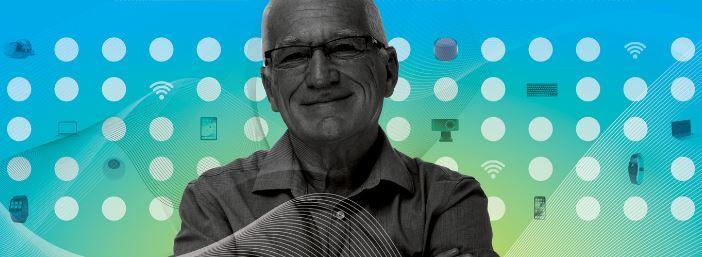How Networking Upgrades In Elder Care Are Improving Provider And Resident Experiences
Building human connections in elderly care with stronger networks
In Northern California, Eskaton has 34 communities and programs, including all levels of senior care and affordable senior housing. Before the pandemic, it had deployed an enterprise platform that served as a hub for digital signage, voice-enabled devices and other tools.
In 2020, the company rapidly deployed additional solutions, which required increased network capacity. To accommodate new pandemic check-in procedures, for example, it reconfigured workflows at kiosks and entry gates. That meant increasing Wi-Fi coverage to places that didn’t need it before.
“There were a lot of networking conversations,” says Sheri Peifer, Chief Strategy Officer.
 Improved networking also supported a
better documentation process for qualified nursing clinicians.
Instead of manually taking residents’ vital signs and entering
them into records on a computer, nurses now use devices linked to
EHRs, allowing them to automatically record vital signs at the
bedside.
Improved networking also supported a
better documentation process for qualified nursing clinicians.
Instead of manually taking residents’ vital signs and entering
them into records on a computer, nurses now use devices linked to
EHRs, allowing them to automatically record vital signs at the
bedside.
One of Eskaton’s most significant initiatives has been a high-speed Wi-Fi upgrade, along with the rollout of tablets and Amazon Echo Show devices, in three affordable senior housing communities. Eskaton carried out the work in partnership with the Lighthouse for Older Adults project at the University of California, Berkeley.
Eskaton had installed Wi-Fi in common areas years ago, but like many of these communities nationwide, individual apartments lacked high-quality coverage. Now every apartment in all three communities has Wi-Fi connectivity and Eskaton is working to upgrade the rest of its affordable housing portfolio.
In addition to facilitating telehealth and other services, improved Wi-Fi also helps diverse residents in the community build social connections, Peifer says.
“It’s not uncommon to live in an apartment next to someone who, unfortunately, you can’t communicate with because one speaks Hmong and the other Farsi, for example,” she says. . But now, thanks to Wi-Fi, tablets and translation apps, residents have a new way to connect.
“A resident knocked on her neighbors door for the first time, walked in with her device, and they had a conversation,” says Peifer.
Planning a new referral network for care of the elderly
In Florida, Dylan Fresh’s great-grandfather founded St. Mark Village in 1977. Today, Fresh is chief technology officer and the nonprofit has two campuses about an hour east. West Tampa: One with an assisted living community and the other with a 500-independent living center and health care wing for memory care, skilled nursing, rehabilitation and assisted living.
When Fresh came on board in 2019, it assessed the IT environment and found many opportunities for improvement. A full upgrade was soon underway, including new servers, security appliances and software, terminals and other solutions.
Attacking the network was the next step. St. Mark Village initially put the project on hold when the pandemic hit, but quickly realized better Wi-Fi was needed to support staff and residents during the lockdown. Fresh had used Cisco Meraki in a previous role and wanted to bring their network visibility to St. Mark Village.
“Every element of the network infrastructure has been upgraded,” he explains, including firewalls, switches, access points, and more. A short-term expansion of Cisco Meraki access points will bring the total number to 250 across both campuses.


